
Date: 2-4 November 2010
Venue: Royal Marine Hotel, Dun Laoghaire, Republic of Ireland
BACKGROUND
In the International Year of Biodiversity what do we have to celebrate? What has been achieved? What targets have been met? What still needs to be done? What tools are available to improve biodiversity conservation in the future?
Heads of State and Government undertook in 2001 to halt the decline of biodiversity in the EU by 2010 and to restore habitats and natural systems. In 2002, they also joined some 130 world leaders in agreeing to significantly reduce the rate of biodiversity loss globally by 2010.
In May 2006, the European Commission adopted a communication on "Halting Biodiversity Loss by 2010 – and Beyond: Sustaining ecosystem services for human well-being". The Communication underlined the importance of biodiversity protection as a pre-requisite for sustainable development, as well as setting out a detailed EU Biodiversity Action Plan to achieve this.
Read more...

Green Roof Design | While the practice of building green roofs is centuries old, it has experienced a renaissance as the structural philosophy of the future. A living green roof reduces the costs of heating and cooling, encourages the local wildlife and naturally filters the rain water it receives. Here, we celebrate the work of some of today’s most talented, most progressive architects, who have adopted green roof design techniques to yield beautiful, sustainable works of architecture.
Villa Bio by Enric Ruiz-Geli

The green roof design of Villa Bio stands out amongst a community of cookie-cutter, Mediterranean-style homes in Llers, Spain. While it was first met with controversy, the completed Villa Bio reflects the nature of the local landscape much more intimately than its neighbors. That nature does not end at the corner of its plot, but continues on to the home’s hydroponic garden that snakes along its green roof. Architect Enric Ruiz-Geli has masterfully designed a home with a seamless connection with the Mediterranean environment, an organically-inspired structure with a lush, productive green roof.
Villa Bio Green Roof Gallery
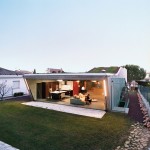 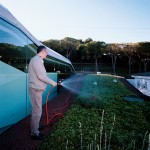 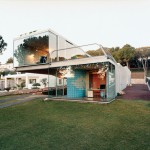
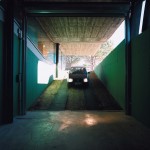  
Mill Valley Residence by McGlashan Architecture

This terraced, multi-family home in Mill Valley, California is as hilly and green as the environment around it. The Mill Valley Residence by McGlashan Architecture includes three sections, each with its own green roof, built into the hill of the lot. The green roof design of the Mill Valley Residence may not produce vegetation of the garden variety, but plants that hail from the home’s local flora. The result is a stunning home with a green roof that reduces heating and cooling costs and stimulates the habitat of local Mill Valley wildlife.
Mill Valley Residence Gallery
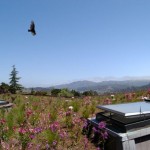  
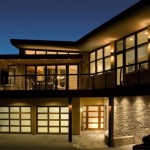 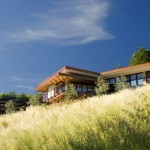 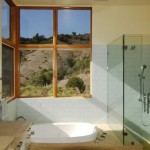
Mountain Dwellings by BIG Architects

The Mountain Dwellings by BIG Architects features a green roof design on a grand scale. The Mountain Dwellings comprise 80 single-family units, each with its own private “back yard”, a green roof over the unit below. Due to the sloping nature of the structure, each green roof deck is out of view of the unit below and above it, with privacy fences separating the units side-by-side. The Mountain Dwellings of Copenhagen provide city living and the back yard feel of suburban life, thanks to a brilliant green design by BIG Architects. [we first featured the Mountain Dwellings in our feature on Housing Design, one you should definitely check out]
Mountain Dwellings Green Roof Design Gallery
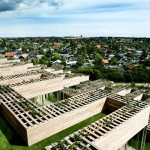  
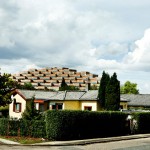 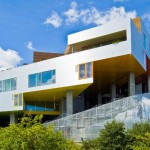 
Nanyang School of Art
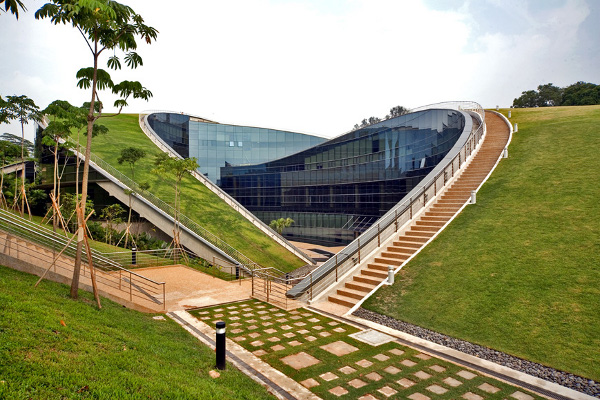
The Nanyang Technological University of Singapore recently erected a green roof building to house their School of Art, Design and Media. The five story structure features two curved sections with stretches of green roof fully accessible to students. In the Nanyang School of Art, the line between landscape and building are blurred. Beyond the aesthetic value of this green roof design, this living skin saves heating and cooling costs and collects rainwater for landscape irrigation.
Nanyang School of Art Gallery
 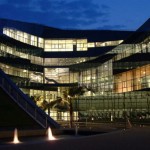 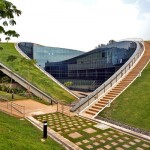
Paraty House by Marcio Kogan Architects
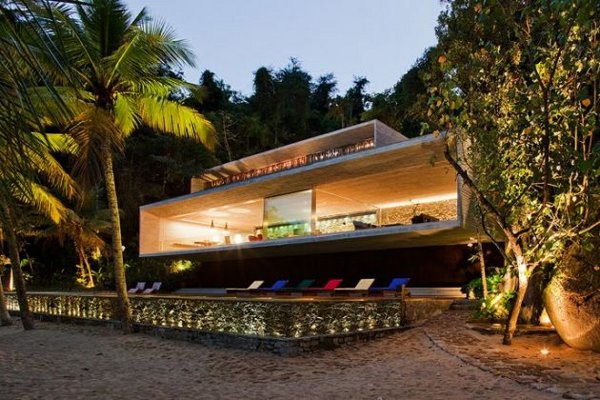
It is no coincidence that one of TheCoolist’s favorite works of architecture features a green roof as its crown. The Paraty House by Marcio Kogan Architects is a sprawling tropical retreat, fully immersed in the vibrant nature of island life. Once its occupants arrive by boat, taking frequent trips back for groceries isn’t on the menu. Instead, its inhabitants tend to a large, well-stocked vegetable garden over its top floor. This green roof provides the herbs and veggies needed to compliment the freshly caught seafood just steps away from Paraty House’s magnificent deck.
Paraty House Gallery
 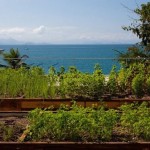 
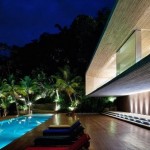 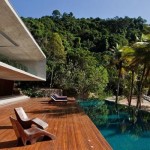 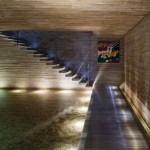
Green Technology Showroom by Vector Architects

The benefits of green roof design and other green technologies are not always apparent. To help communicate their values to the public, the Green Technology Showroom by Vector Architects is an example in eco success. The Green Technology Showroom in Beijing, China is blanketed in thick, climate-controlling grasses attached to an inner steel skeleton. It now stands in a residential development, a temporary symbol of sustainable design.
Green Technology Showroom Gallery
  
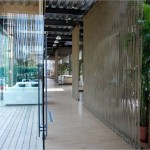 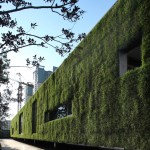 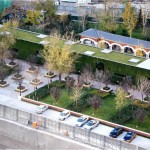
California Academy of Sciences by Renzo Piano
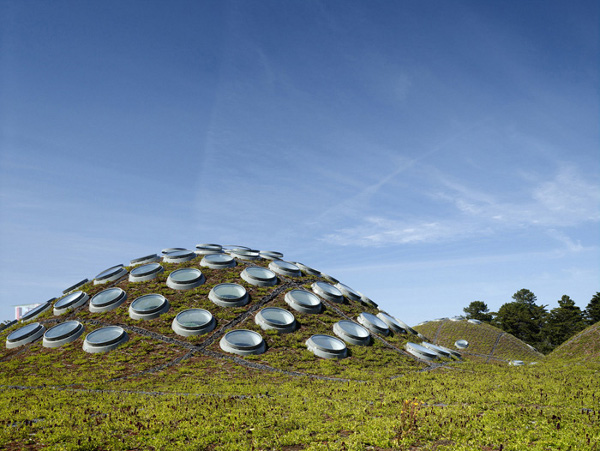
The California Academy of Sciences by Renzo Piano is a stunning achievement in green roof design. Such structures are no stranger to Italian architect Renzo Piano, who designed a long time favorite of TheCoolist, the Vulcano Buono in Nola, Italy. The CAS building in San Francisco, California features a 2.5 acre green roof that is blanketed by local plants, acting as a habitat for bay area wildlife. Within, the CAS features a planetarium, an aquarium and a man-made rain forest, all three of which rest right under the dome sections of this amazing green roof.
California Academy of Sciences Green Roof Gallery
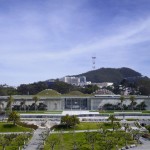 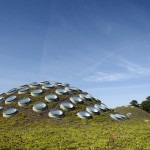 
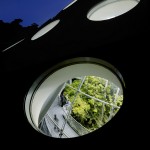  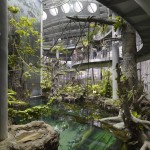
OS House by NOLASTER Architects
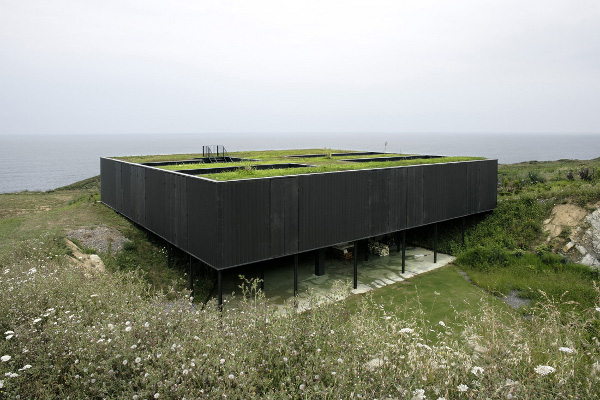
The harsh coastal winds of Santander, Spain can make enjoying this rocky shore quite difficult. Where most houses in this stretch focus back inland, the OS House by NOLASTER Architects is centered around the water below. It is built in a low-profile fashion that merges with the plot’s topography, as well as continuing the foliage around it with a full-size green roof. Unlike many others on this list, the green roof design of OS House is habitable, a soft, grassy bed on which to enjoy the coastal nature of Spain’s north shore.
OS House Gallery
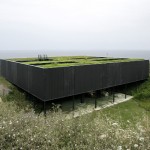 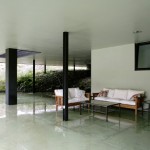 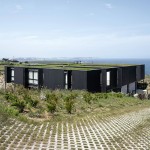
  
Historial de la Vendée by PLAN01

When it comes to blending in with the landscape, few buildings are a greater success than Historial de la Vendée by PLAN01 Architects. PLAN01 has created a geometric, softly-pitched structure lined with a lush green roof. From a distance, this green roof looks nearly indistinguishable from the land around it, just a collection of hills in a field in France. A closer inspection reveals a truly stunning building, one of the most visually natural green roof designs today.
Historial de la Vendée Green Roof Gallery
  
OUTrial House by KWK Promes

The plot for this amazing green roof home called for a rather specific characteristic– a field clearing within a forest. The OUTrial House by KWK Promes appears to have been excavated right out of the rolling Polish countryside, then covered over with the very grass it broke to be constructed. The smooth curves and shaggy grass roof give this home a dreamy appeal, as if it were inspired only by childhood wonder and imagination.
OUTrial House Gallery
  
  
- – - – - – - – -
Thanks for reading, and feel free to share your thoughts on green roofs, sustainable architecture and progressive design principles in the comments below. In the mean time, be sure to check out these other great architecture-related features here on TheCoolist.
To learn more about Green Roof Design, here are a few resources we feel are very worth exploring:
- Green Roof Information [wikipedia]
- ArchDaily’s coverage of green roofs in architecture [archdaily]
- The green roof resources of the environmental protection agency [EPA]
- The GreenRoofs.com portal for related information [greenroofs.com]
Source: http://www.thecoolist.com/green-roof-design-10-stunning-sustainable-works-of-architecture/
Using Biomimicry To Design Cities
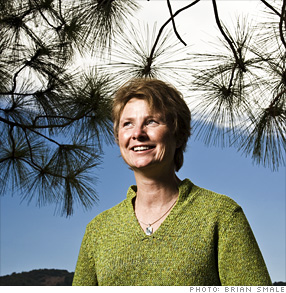 Yesterday in a sunny corner of London, a select group of UK journalists, myself included, were treated to an enrapturing few hours in the company of biomimicry guru Janine Benyus. The group was brought together by sustainable business pioneers InterfaceFLOR, whose long standing working relationship with Benyus enabled them to arrange this exclusive press lunch at raw food restaurant Saf. It was appropriate that Janine spoke to us in the centre of the bustling metropolis as her latest work in the field of biomimicry is focused on using the discipline to inform the design and function of cities. Yesterday in a sunny corner of London, a select group of UK journalists, myself included, were treated to an enrapturing few hours in the company of biomimicry guru Janine Benyus. The group was brought together by sustainable business pioneers InterfaceFLOR, whose long standing working relationship with Benyus enabled them to arrange this exclusive press lunch at raw food restaurant Saf. It was appropriate that Janine spoke to us in the centre of the bustling metropolis as her latest work in the field of biomimicry is focused on using the discipline to inform the design and function of cities.
Biologist at the Design Table
Janine Benyus describes her job as being the "biologist at the design table", a career that she says didn't really exist 10-12 years ago. Since the publication of her book, Biomimicry: Innovation Inspired by Nature in 1997, Benyus and her colleagues at the Biomimicry Guild have worked with some of the world's most successful companies including Walmart, Nike and Interface, helping them ask nature for inspiration on how to create more sustainable products and systems.
"After my book came out we expected environmentalists and conservationists to get in touch, but in fact it was big business who called. They wanted a biologist to come and talk about how life works. People woke up to the fact that there is a sustainable world in nature that we hadn't been using as a model"
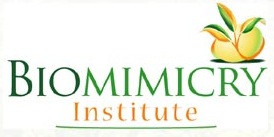 The City as an Ecosystem The City as an Ecosystem
When I asked Janine yesterday what she was currently most excited about, after all these years of working in biomimicry, her unequivocal answer was cities. The Biomimicry Guild has teamed up with HOK, one of the largest architectural developers in the world, to work on city masterplans inspired by nature. "A company like HOK has a massive impact on huge areas of land, due to the scale and breadth of their work. So the question we asked was how can you have a city perform like an ecosystem?"
Ecological Performance Standards
Benyus and her team have been developing the concept of designing cities to an 'ecological performance standard', looking at the original topography of the locale and working out the metrics of how the natural environment should perform. "How many millimetres of soil, how many tons of carbon, how much water stored, how much air purified? It is not enough to have green roofs and walls, we need to ask how a building will store carbon. We need cities to perform like ecosystems, not just look like them."
Read more...
 Widescale human learning and unlearning are the keys to making the transition from our current eco-destructive culture to a fresh, designed culture that is eco-constructive and socially just. Widescale human learning and unlearning are the keys to making the transition from our current eco-destructive culture to a fresh, designed culture that is eco-constructive and socially just.
Those of us who are willing need to choose to make this transition now.
Some people (we calculate hundreds of thousands) have already started on this endless journey and this worldwide web of pioneers holds a vast repertoire of useful experiences for future learners.
Our observation is that transition pathways of this significance are deepest, most effective and most enjoyable when traveled in the company of others, and that trail guides, who have made a part of their own journey already, can perform a valuable mentoring service.
Our belief is that this learning process deserves to be supported and enhanced through the provision of a 'liberating structure' that acknowledges the effort and commitment people make when walking these pathways. Gaia University is one such structure.
Using self-directed action learning as our prime learning/un-learning strategy we put students (Associates) in charge of their own transitions, free to follow routes which open up before them, guided by their tutors and mentors, whilst earning credits for Bachelors and Masters Degrees, Certificates and Diplomas.
We notice the vital signs of an awakening of transitional energy amongst the world's peoples and so, we have launched Gaia University to provide the support we can to these bold world changers and future generations of Earth caretakers.
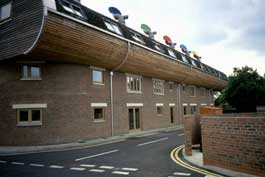 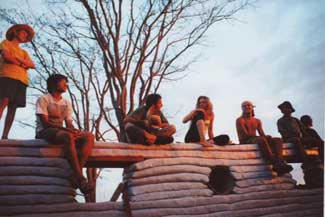 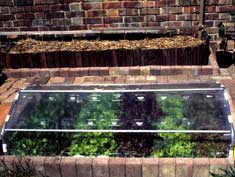
Gaia University is a new organization within the large family of organizations worldwide concerned with the emergence of an ecologically and socially regenerative mainstream culture.
It is created with several, network-wide functions in mind, some of which are described briefly below.
Beneficial connections:
Gaia University has the facility to connect across organizations using the allied vectors of teaching and learning. Thus organizations may retain their autonomous agendas whilst linking cooperatively to provide a learning ecology suited to their purposes.
Read more...

What is GLOBIO?
GLOBIO is a modelling framework to calculate the impact of five environmental drivers on land biodiversity for past, present and future.
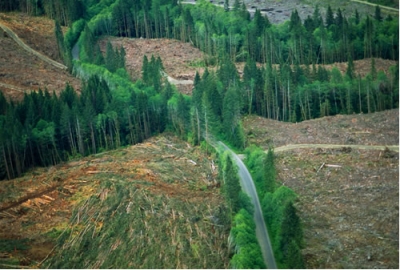
Land use, here forestry, is one of the environmental drivers impacting biodiversity.
GLOBIO is based on cause-effect relationships, derived from the literature. To use GLOBIO no detailed species data are needed. Instead, the model uses spatial information on environmental drivers as input. This input is mainly derived from the Integrated Model to Assess the Global Environment (IMAGE).
The current version of GLOBIO, GLOBIO3, focuses on the terrestrial part of the globe. A module for the freshwater aquatic environment is under development (GLOBIO-aquatic). The Sea Around Us Project of the University of British Colombia (UBC) has developed a similar model for marine ecosystems: EcoOcean.
The information under this menu item refers to the current version of the model: GLOBIO3.
Read more...
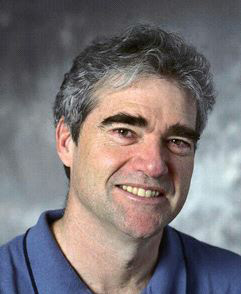 The Medea Hypothesis: The Medea Hypothesis:
Is Life on Earth Ultimately Self-Destructive?
Peter Ward
In The Medea Hypothesis, renowned paleontologist Peter Ward proposes a revolutionary and provocative vision of life's relationship with the Earth's biosphere--one that has frightening implications for our future, yet also offers hope. Using the latest discoveries from the geological record, he argues that life might be its own worst enemy. This stands in stark contrast to James Lovelock's Gaia hypothesis--the idea that life sustains habitable conditions on Earth. In answer to Gaia, which draws on the idea of the "good mother" who nurtures life, Ward invokes Medea, the mythical mother who killed her own children. Could life by its very nature threaten its own existence?
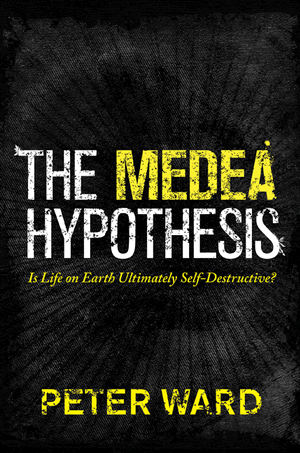 According to the Medea hypothesis, it does. Ward demonstrates that all but one of the mass extinctions that have struck Earth were caused by life itself. He looks at our planet's history in a new way, revealing an Earth that is witnessing an alarming decline of diversity and biomass--a decline brought on by life's own "biocidal" tendencies. And the Medea hypothesis applies not just to our planet--its dire prognosis extends to all potential life in the universe. Yet life on Earth doesn't have to be lethal. Ward shows why, but warns that our time is running out. According to the Medea hypothesis, it does. Ward demonstrates that all but one of the mass extinctions that have struck Earth were caused by life itself. He looks at our planet's history in a new way, revealing an Earth that is witnessing an alarming decline of diversity and biomass--a decline brought on by life's own "biocidal" tendencies. And the Medea hypothesis applies not just to our planet--its dire prognosis extends to all potential life in the universe. Yet life on Earth doesn't have to be lethal. Ward shows why, but warns that our time is running out.
Breathtaking in scope, The Medea Hypothesis is certain to arouse fierce debate and radically transform our worldview. It serves as an urgent challenge to all of us to think in new ways if we hope to save ourselves from ourselves.
Peter Ward's many books include the highly acclaimed Rare Earth: Why Complex Life Is Uncommon in the Universe and Under a Green Sky (Collins). He is professor of biology and Earth and space sciences at the University of Washington, and an astrobiologist with NASA.
Reviews:
"Ward holds the Gaia Hypothesis, and the thinking behind it, responsible for encouraging a set of fairy-tale assumptions about the earth, and he'd like his new book, due out this spring, to help puncture them. He hopes not only to shake the philosophical underpinnings of environmentalism, but to reshape our understanding of our relationship with nature, and of life's ultimate sustainability on this planet and beyond."--Drake Bennett, Boston Globe
Read more...
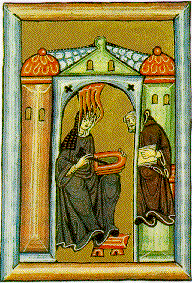 ... The godless do not know how to act, or how to renounce. They have neither purity nor truth. They do not understand the right principles ... They say that the universe is an accident with no purpose and no God ... that life is created by sexual union, a product of lust and nothing else. Thinking thus, these degraded souls, these enemies of mankind - whose intelligence is negligible and whose deeds are monstrous - come into the world only to destroy. -- Bhagavad Gita ... The godless do not know how to act, or how to renounce. They have neither purity nor truth. They do not understand the right principles ... They say that the universe is an accident with no purpose and no God ... that life is created by sexual union, a product of lust and nothing else. Thinking thus, these degraded souls, these enemies of mankind - whose intelligence is negligible and whose deeds are monstrous - come into the world only to destroy. -- Bhagavad Gita
It is important today that theologians and others should begin to look at the Bible afresh, and to reassess its message about humanity and our relationship with the planet. A fresh reading of biblical texts about the created world order, its conservation and restoration, and some reflections on the cultural context in which these themes occur, not only in the Bible but also in other religious texts from neighbouring cultures, can tell us much about Christianity's real ecological ethic ... When the Bible's teaching on God's Creation and our place in it is duly digested, I believe that it cries out to us: 'you are fellow-creatures of everything else in the Cosmos. You have no right to exploit or destroy, but you have duties to all, under God to whom you are responsible.' -- Father Robert Murray
Many people today are calling for modern religion, and specifically Christianity, to be re-imbedded in the cosmos, so that religion might become a real force in providing the ethical and spiritual energy for the critical task of reversing the degradation of the Earth. -- Vincent Rossi
Read more...
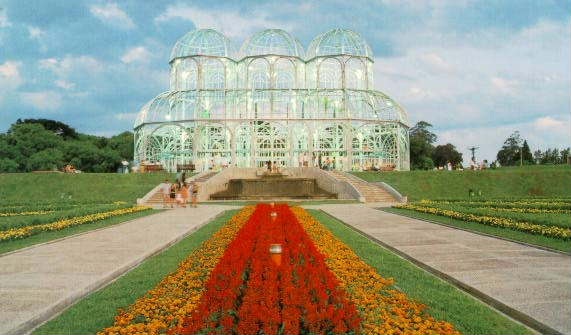 Credit cards give us goods quickly, the fax machine gives us the message quickly – the only thing left in our Stone Age is central governments. -- Jaime Lerner, former mayor of Curitiba Credit cards give us goods quickly, the fax machine gives us the message quickly – the only thing left in our Stone Age is central governments. -- Jaime Lerner, former mayor of Curitiba
Citizens, the ancient Athenians realized, are the best people to identify priorities for action in their own cities. If cities are to become more sustainable, people must take action in the neighborhoods where they live. Most of the urban environmental success stories came about when citizens identified various problems and the links between them in order to pin down cause and effect. A charismatic mayor in Curitiba, for instance, saw that chaotic development and poor public transportation conspired to worsen air pollution: car use increased as buildings sprouted far from bus stops. By winning popular backing for a new bus system, he demonstrated that when citizens understand such connections, they often support or even demand change. -- Molly O’Meara
Most urban residents support strong environmental policies, but wealthy interest groups and corrupt officials often skew local political decisions. -- Molly O’Meara
When citizens have insufficient understanding of the causes of local problems, the political process suffers. -- Molly O’Meara
From every single window in Curitiba, I could see as much green as I could concrete. And green begets green; land values around the new parks have risen sharply, and with them tax revenues. --- Bill McKibben
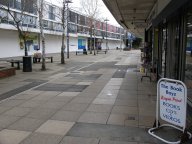 It is not often we can praise the way our towns and cities are run. They are usually run by people lacking in vision, out for their own self-aggrandizement, mired to their necks in sleaze and corruption. It is not often we can praise the way our towns and cities are run. They are usually run by people lacking in vision, out for their own self-aggrandizement, mired to their necks in sleaze and corruption.
It is all too easy to find the bad examples. Farnborough, a small town south west of London, the town centre lying derelict thanks to the council pushing through highly unpopular plans to demolish the entire northern half of the town centre for a superstore. The store will face out of the town with its own car park, social housing of 28 maisonettes to be destroyed for the car park. Upton Park in the East End of London, home to West Ham's football ground, where the mayor wishes to destroy the century-old Queen's Market, an undercover street market. 12,000 people who have signed a petition opposing the destruction of Queen's Market, have been dismissed as second class citizens. The mayor is practicing a form of cultural apartheid, ethnic cleansing, wishing to see the poor driven out of the borough and replaced by yuppies occupying expensive apartments.
Neither of these examples could be classed as sustainable development. Many more examples could be added to the list.
Read more...

Rachel Louise Carson (May 27, 1907 – April 14, 1964) was an American marine biologist and nature writer whose writings are credited with advancing the global environmental movement.
Carson started her career as a biologist in the U.S. Bureau of Fisheries, and became a full-time nature writer in the 1950s. Her widely praised 1951 bestseller The Sea Around Us won her financial security and recognition as a gifted writer. Her next book, The Edge of the Sea, and the republished version of her first book, Under the Sea Wind, were also bestsellers. Together, her sea trilogy explores the whole of ocean life, from the shores to the surface to the deep sea.
In the late 1950s, Carson turned her attention to conservation and the environmental problems caused by synthetic pesticides. The result was Silent Spring (1962), which brought environmental concerns to an unprecedented portion of the American public. Silent Spring spurred a reversal in national pesticide policy—leading to a nationwide ban on DDT and other pesticides—and the grassroots environmental movement the book inspired led to the creation of the Environmental Protection Agency. Carson was posthumously awarded the Presidential Medal of Freedom by Jimmy Carter.
Read more...
Community Earth System Model to be used in next IPCC assessment
|
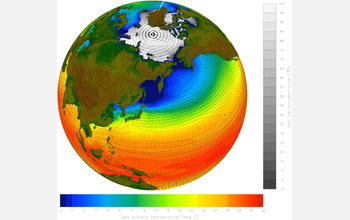
This simulation, produced by the CCSM, provides new knowledge about Earth's climate.
|
August 18, 2010
Scientists can now study climate change in far more detail with powerful new computer software released by the National Center for Atmospheric Research (NCAR) in Boulder, Colo.
The Community Earth System Model will be one of the primary climate models used for the next assessment by the Intergovernmental Panel on Climate Change (IPCC).
The CESM is the latest in a series of NCAR-based global models developed over the last 30 years. The models are jointly supported by the U.S. Department of Energy (DOE) and the National Science Foundation (NSF), which is NCAR's sponsor.
Scientists and engineers at NCAR, DOE laboratories, and several universities developed the CESM.
Read more...
 Biodiversity and ecosystems deliver crucial services to humankind - from food security to keeping our waters clean, buffering against extreme weather, providing medicines to recreation and adding to the foundation of human culture. Together these services have been estimated to be worth over 21-72 trillion USD every year - comparable to the World Gross National Income of 58 trillion USD in 2008. Biodiversity and ecosystems deliver crucial services to humankind - from food security to keeping our waters clean, buffering against extreme weather, providing medicines to recreation and adding to the foundation of human culture. Together these services have been estimated to be worth over 21-72 trillion USD every year - comparable to the World Gross National Income of 58 trillion USD in 2008.
 English English
|
 The economic analysis in the Green Economy Report builds in part on the encouraging signs and results of many initiatives around the world. A number of these come from developing countries, including emerging economies, and illustrate a positive benefit stream from specific green investments and policies, that if scaled up and integrated into a comprehensive strategy, could offer an alternative development pathway, one that is pro-growth, projobs and pro-poor. The economic analysis in the Green Economy Report builds in part on the encouraging signs and results of many initiatives around the world. A number of these come from developing countries, including emerging economies, and illustrate a positive benefit stream from specific green investments and policies, that if scaled up and integrated into a comprehensive strategy, could offer an alternative development pathway, one that is pro-growth, projobs and pro-poor.
 English English
Biodiversity, Food Forests, Food Plants - Annual, Food Plants - Perennial, Plant Systems
by Dr. Mae-Wan Ho September 23, 2008
Sustainable farming across the world relies on cultivating a diversity of crops and livestock to maximise internal input, and this is in marked contrast to the high external input monoculture of industrial farming, which is proving unsustainable in many respects. Indirect support for the sustainability of agricultural diversity is coming from an unexpected quarter. Academic ecologists are discovering that biodiverse systems are more productive.
by Dr. Mae-Wan Ho: Geneticist, Biophysicist and Director of the not-for-profit Institute of Science in Society.
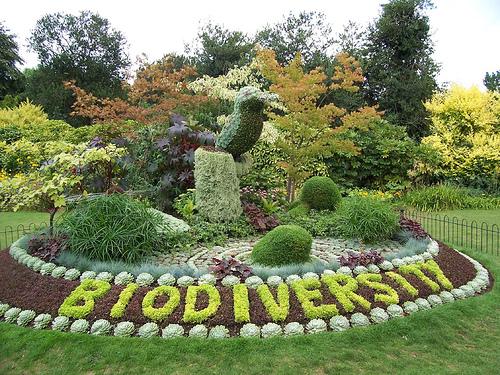 For over three decades, academic ecologists have debated whether complex, species-rich ecosystems are more stable than ones with fewer species. Unfortunately, there are many definitions of complexity, and even more of stability; and so the debate continues. For over three decades, academic ecologists have debated whether complex, species-rich ecosystems are more stable than ones with fewer species. Unfortunately, there are many definitions of complexity, and even more of stability; and so the debate continues.
The question most relevant to agriculture, and also most easily answered, is whether biodiverse systems are more productive. There is growing evidence that biodiverse systems are indeed more productive, although ecologists still disagree as to how that could be explained, and on the number of species needed to sustain an ecosystem, which has large implications also for conservation.
One hypothesis is that there is “niche complementarity” among particular combinations of species, in other words, they have mutually complementary relationships so the more species there are, the greater the chance occurrence of such complementarity. This would be due to both differences in resource requirements over space and time, and positive, symbiotic interactions between the species.
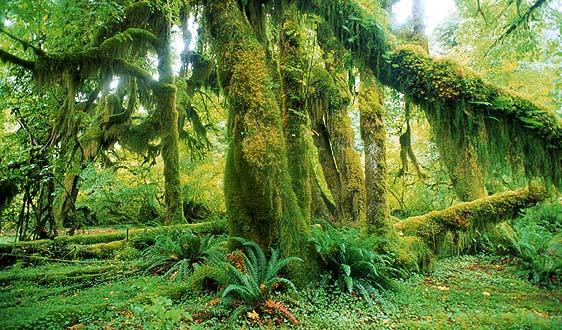 Alternatively, the greater productivity associated with diversity may be due to short-lived or transient effects, caused solely by the presence of some species with high growth rate. Or the effects could simply be experimental artefacts. The species compared may happen to include some with very low-viability, or else with very high, competitive growth rates. These ‘sampling effects’ result from the greater chance of such species being present at higher diversity, and from dynamics that cause a single species to dominate and determine how the ecosystem evolves. Alternatively, the greater productivity associated with diversity may be due to short-lived or transient effects, caused solely by the presence of some species with high growth rate. Or the effects could simply be experimental artefacts. The species compared may happen to include some with very low-viability, or else with very high, competitive growth rates. These ‘sampling effects’ result from the greater chance of such species being present at higher diversity, and from dynamics that cause a single species to dominate and determine how the ecosystem evolves.
Fortunately, David Tilman and his colleagues in the University of Minnesota, St. Paul, and University of Nebraska, Lincoln, can now address these questions from the results of an experiment they started in May, 1994 and continued to this day [1].
Read more...
|
|





























































 Yesterday in a sunny corner of London, a select group of UK journalists, myself included, were treated to an enrapturing few hours in the company of biomimicry guru
Yesterday in a sunny corner of London, a select group of UK journalists, myself included, were treated to an enrapturing few hours in the company of biomimicry guru 
 Widescale human learning and unlearning are the keys to making the transition from our current eco-destructive culture to a fresh, designed culture that is eco-constructive and socially just.
Widescale human learning and unlearning are the keys to making the transition from our current eco-destructive culture to a fresh, designed culture that is eco-constructive and socially just.




 The Medea Hypothesis:
The Medea Hypothesis: According to the Medea hypothesis, it does. Ward demonstrates that all but one of the mass extinctions that have struck Earth were caused by life itself. He looks at our planet's history in a new way, revealing an Earth that is witnessing an alarming decline of diversity and biomass--a decline brought on by life's own "biocidal" tendencies. And the Medea hypothesis applies not just to our planet--its dire prognosis extends to all potential life in the universe. Yet life on Earth doesn't have to be lethal. Ward shows why, but warns that our time is running out.
According to the Medea hypothesis, it does. Ward demonstrates that all but one of the mass extinctions that have struck Earth were caused by life itself. He looks at our planet's history in a new way, revealing an Earth that is witnessing an alarming decline of diversity and biomass--a decline brought on by life's own "biocidal" tendencies. And the Medea hypothesis applies not just to our planet--its dire prognosis extends to all potential life in the universe. Yet life on Earth doesn't have to be lethal. Ward shows why, but warns that our time is running out.
 Credit cards give us goods quickly, the fax machine gives us the message quickly – the only thing left in our Stone Age is central governments. -- Jaime Lerner, former mayor of Curitiba
Credit cards give us goods quickly, the fax machine gives us the message quickly – the only thing left in our Stone Age is central governments. -- Jaime Lerner, former mayor of Curitiba It is not often we can praise the way our towns and cities are run. They are usually run by people lacking in vision, out for their own self-aggrandizement, mired to their necks in sleaze and corruption.
It is not often we can praise the way our towns and cities are run. They are usually run by people lacking in vision, out for their own self-aggrandizement, mired to their necks in sleaze and corruption.

 For over three decades, academic ecologists have debated whether complex, species-rich ecosystems are more stable than ones with fewer species. Unfortunately, there are many definitions of complexity, and even more of stability; and so the debate continues.
For over three decades, academic ecologists have debated whether complex, species-rich ecosystems are more stable than ones with fewer species. Unfortunately, there are many definitions of complexity, and even more of stability; and so the debate continues.


